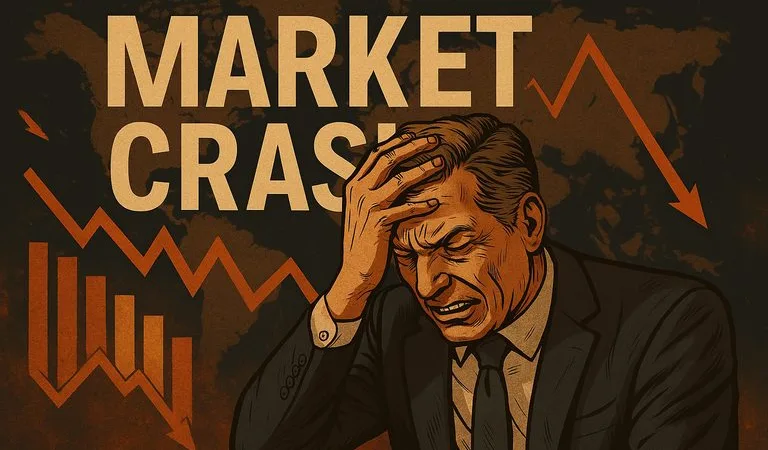How the VSM Helped Save Ireland’s Eco Village in Times of Economic Crisis

In the picturesque countryside of Ireland lies Cloughjordan Ecovillage, a pioneering community established to champion sustainable living. However, as with any ambitious initiative, this eco-village encountered complex challenges that threatened its survival during an economic crisis. Remarkably, it was the Viable System Model (VSM), devised by renowned cybernetician Stafford Beer, that played a pivotal role in navigating the crisis and rejuvenating the community. This article examines how the VSM supported Cloughjordan Ecovillage through its challenges, highlights its role in fostering self-organization, and considers its broader use in complex systems and environments.
Ireland’s Eco Village
Background
Ireland’s Eco Village, officially known as The Village, is a sustainable community project situated in Cloughjordan, County Tipperary, Ireland. It was conceived in 1999 as a model for eco-friendly living. In 2002, Cloughjordan was identified as a potential site for the project, and planning commenced in 2003-2004. By 2005, a 67-acre (270,000 m²) tract of farmland was purchased to bring the vision to life. Infrastructure development began in 2006 and was completed by 2008. The first residents moved into their eco-friendly homes in December 2009.
Design and Features
The Village is designed to integrate ecological principles, promoting a self-sustaining and low-carbon lifestyle. Its key features include:
- Eco-Friendly Housing:
The 67 houses in the community were built using sustainable materials and methods, with a strong focus on energy efficiency. Features such as high-quality insulation, solar panels, and solar water heating systems ensure minimal energy consumption. - Renewable Energy Systems:
A significant portion of the community’s energy needs is met through renewable sources. A district heating system efficiently distributes heat generated from renewable energy to all households. - Shared Facilities and Green Spaces:
Communal gardens, farmland, and shared green spaces encourage collaboration and foster a sense of community among residents. These spaces also support local food production, reducing dependency on external supply chains. - Education and Outreach:
The village includes an educational center dedicated to teaching sustainable practices, hosting workshops, and engaging with the wider community to promote eco-conscious living.
Challenges During the Financial Crisis
The Village was conceived as a cooperative, sustainable community that rejected top-down management in favor of democratic, participatory governance. Despite initial success in establishing green technologies, permaculture systems, and community spaces, the project faced significant financial and organizational challenges during the late 2000s economic downturn.
Key issues included:
- A collapsing property market that affected funding.
- Delays and rising costs in infrastructure development.
- Inefficient task allocation and decision-making processes.
This period marked a turning point where systemic thinking, particularly the VSM, played a critical role in navigating the crisis and ensuring the community’s survival.
Understanding the Viable System Model
The Viable System Model, developed by Stafford Beer in the 1970s, is a theoretical framework designed to help organizations maintain viability — their ability to adapt and sustain themselves in changing environments. At its core, the VSM views any viable system as comprising five interrelated subsystems. The diagram below provides a detailed visualization of the interactions between various subsystems and their roles in achieving systemic viability.

Key Components of the VSM
System 1: Operations (Value Production)
These are the operational units responsible for producing value for customers, as represented in the “Local Management” loops. Each unit operates semi-autonomously to address specific local demands while adhering to broader systemic goals.
System 2: Coordination
This layer ensures harmonious interactions between operational units by managing conflicts, smoothing out oscillations, and ensuring efficient resource utilization. It facilitates synchronization, such as production planning and inter-departmental communication.
System 3: Optimization and Control
This subsystem optimizes operations by conducting periodic audits (referred to as “Three Star”) and leveraging internal synergies. It identifies anomalies and enhances learning potential within the system.
System 4: Adaptation and Strategic Development
Positioned at the interface of the organization and its environment, this system anticipates future challenges and explores potential opportunities. It handles scenario development, innovation, and hypothesis-driven strategies to ensure long-term relevance.
System 5: Ethos and Identity
The highest level encapsulates the organization’s identity, norms, and guiding values. This level provides an overarching framework for decision-making and ensures alignment with the organization’s purpose.
Applying the VSM
In 2007, researchers collaborated with the Cloughjordan community to apply the VSM as part of an action research project. Workshops and coaching sessions were conducted to teach members the core principles of the VSM, which they used to restructure their organization.
Key Interventions
The village streamlined its operations (System 1) by identifying and prioritizing core activities such as renewable energy production, organic farming, and community workshops. This focus eliminated unnecessary expenditures and ensured that the essential functions of the community thrived.
To enhance coordination (System 2), regular meetings were introduced alongside transparent communication practices. The adoption of digital tools allowed members to monitor resource usage and manage shared spaces more efficiently, fostering harmony across various activities.
On the control front, System 3 mechanisms were strengthened by establishing a financial committee. This group meticulously tracked expenses, ensuring that funds were wisely allocated to reduce debts and optimize the use of resources.
When it came to adapting to the external environment, the village leveraged System 4 by hosting workshops that educated members on market trends and potential funding opportunities. These efforts led to securing grants from environmental organizations, the Irish government and European Union, which were vital in supporting their eco-friendly initiatives.
Finally, the Eco Village revisited its overarching policy and vision (System 5). A renewed emphasis on sustainability and community well-being was integrated into all decision-making processes, reinforcing the shared commitment of its members and solidifying their long-term purpose.
By adopting these systemic changes, the VSM enabled Cloughjordan Ecovillage to weather economic challenges and emerge as a resilient, cohesive community.
Lessons Learned from the Research
The intervention provided valuable insights into self-organization in grassroots communities. The research paper highlights how the VSM acted as a “meta-language” that guided the community’s transformation. By asking critical questions about their structure and processes, members learned to self-regulate and address challenges effectively.
One notable aspect was the community’s rejection of hierarchical models, instead fostering autonomy and participation. The action research approach also allowed the researchers to study the dynamics of self-organization, using tools like social network analysis and longitudinal studies to assess the impact of the VSM.
The results showed that the VSM not only improved the community’s organizational structure but also strengthened its resilience, ensuring its survival during a period of economic crisis.
Use of VSM Across Sectors
The Viable System Model continues to demonstrate its relevance across sectors, enabling organizations to navigate complexity with agility and purpose. Whether enhancing sustainability in eco-villages, streamlining operations in healthcare, driving innovation in businesses, or improving governance in public systems, the VSM provides a robust framework for adaptation and resilience. Its capacity to align diverse functions into a cohesive system ensures that organizations can effectively respond to dynamic challenges, making it a valuable tool for modern organizational success.
Source(s)
Complexity management in practice: A Viable System Model intervention in an Irish eco-community






